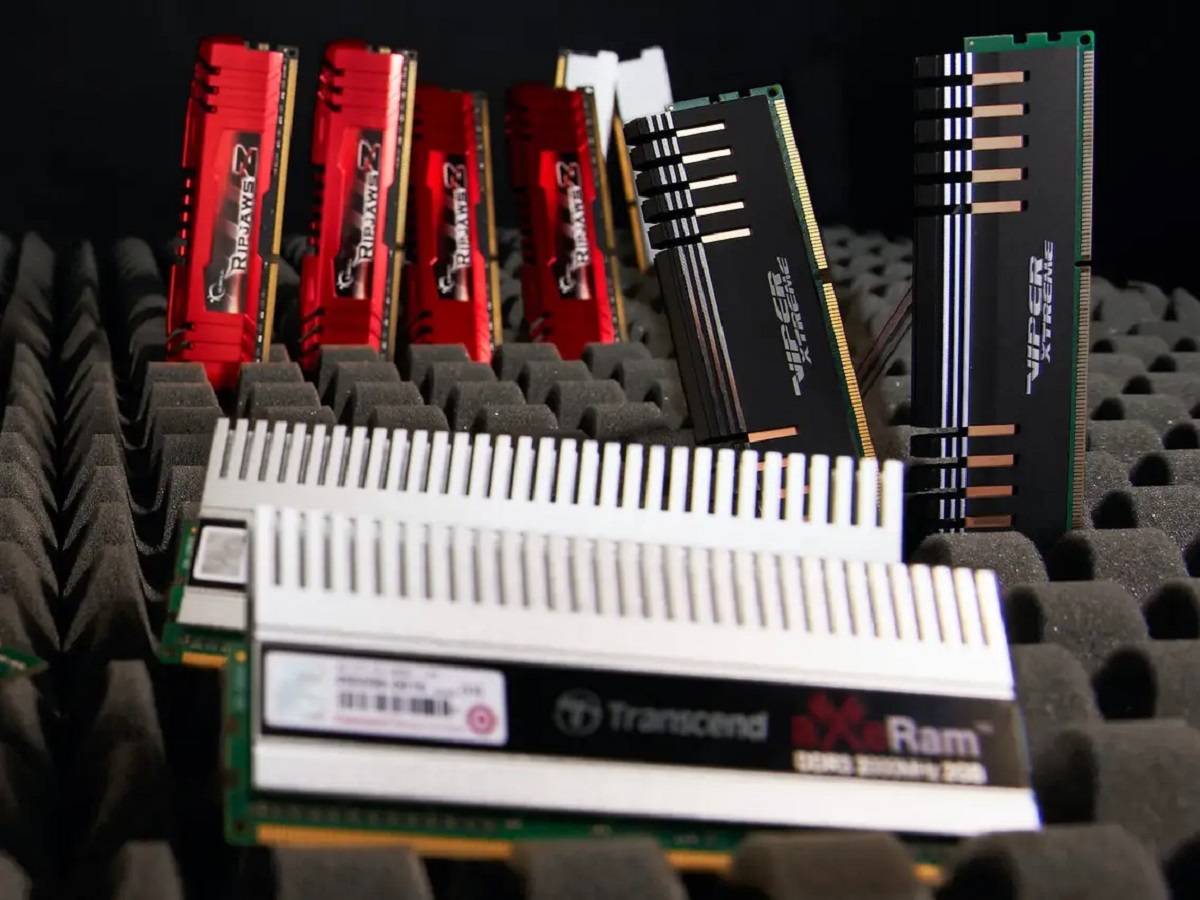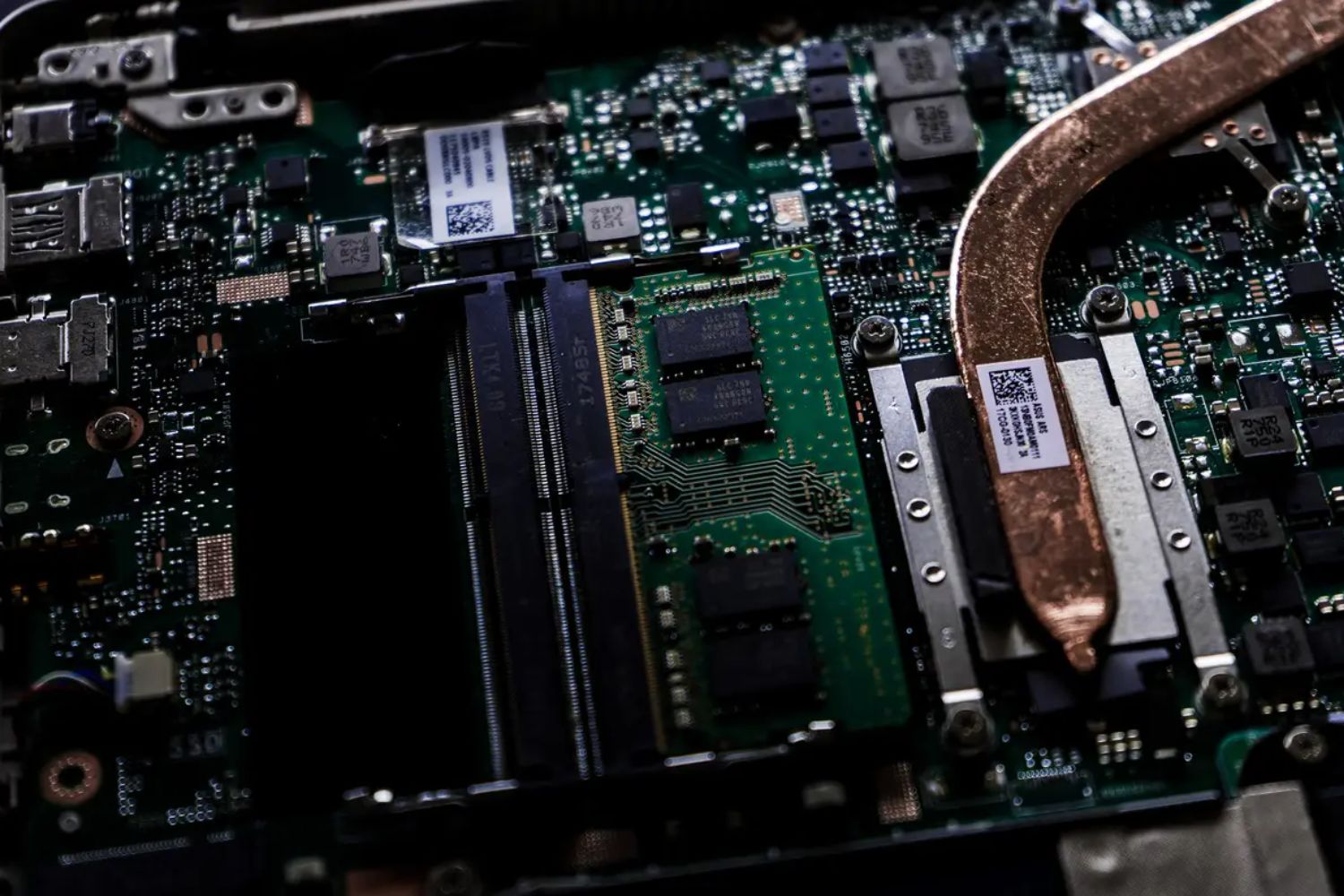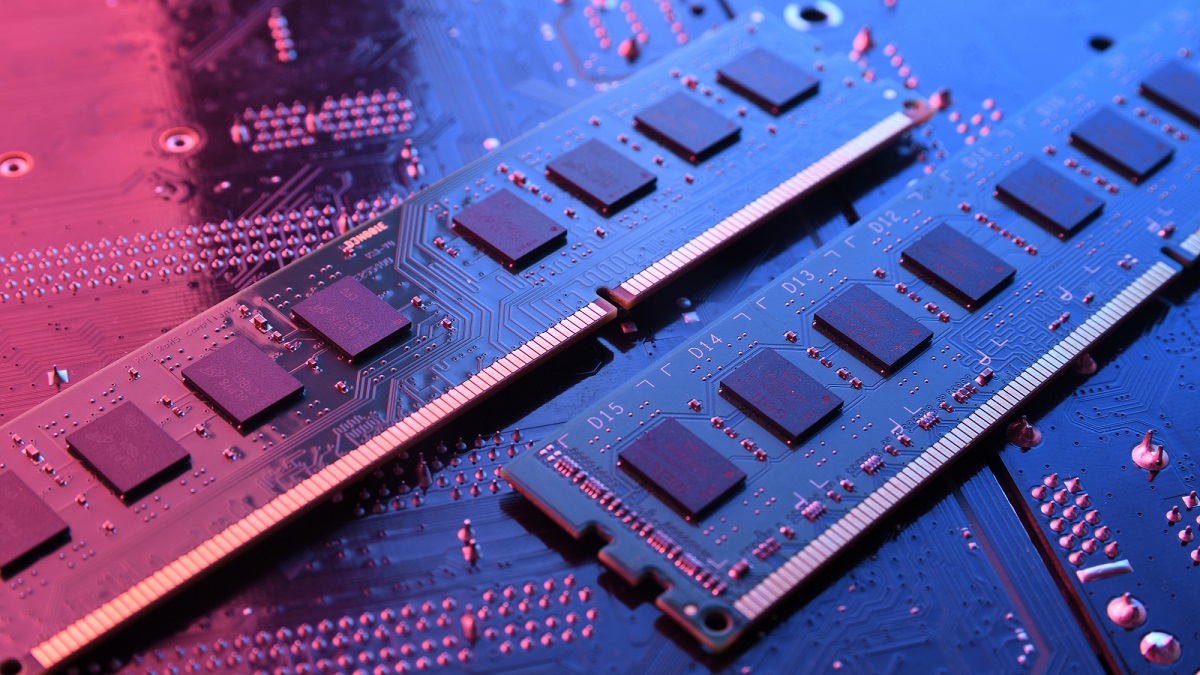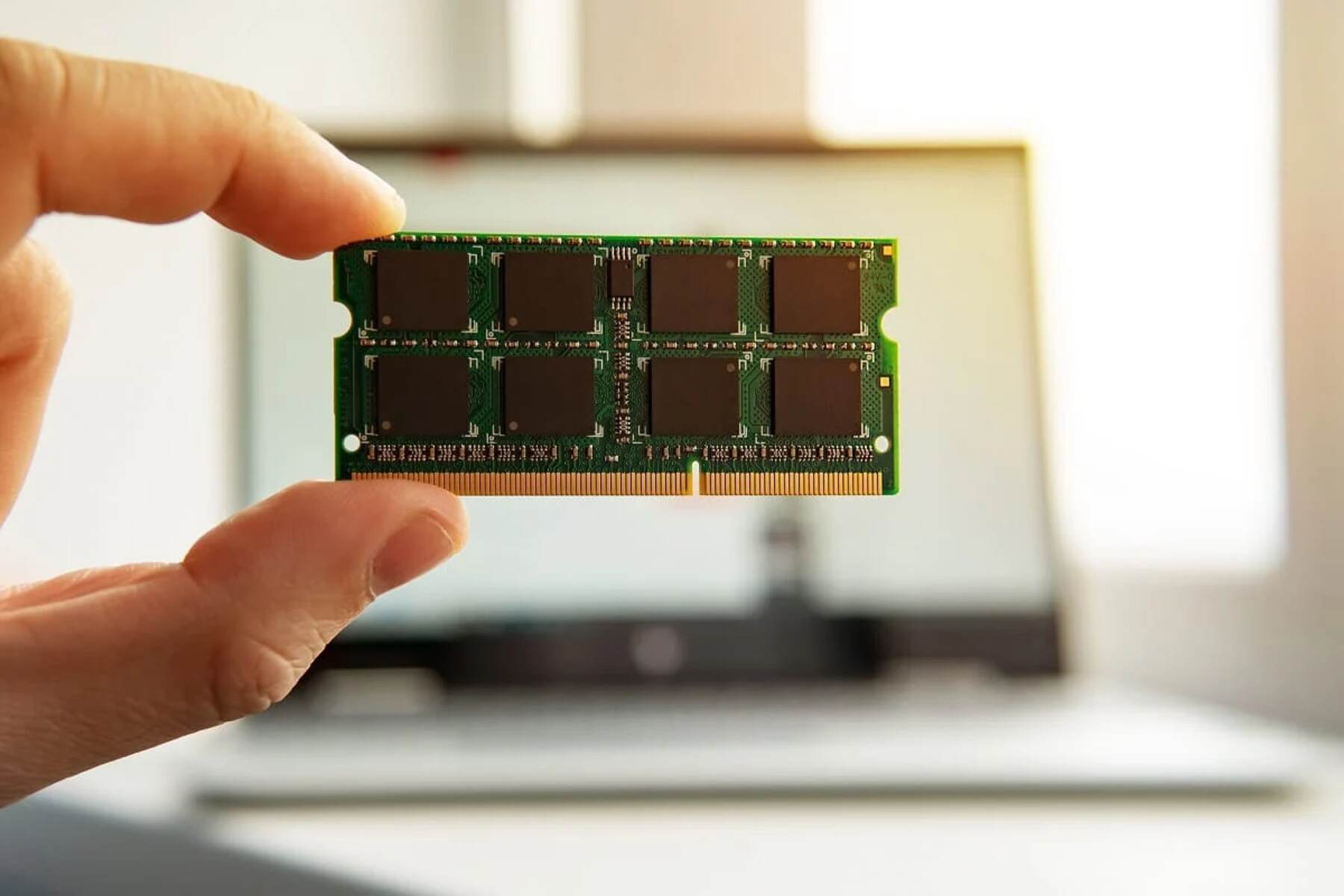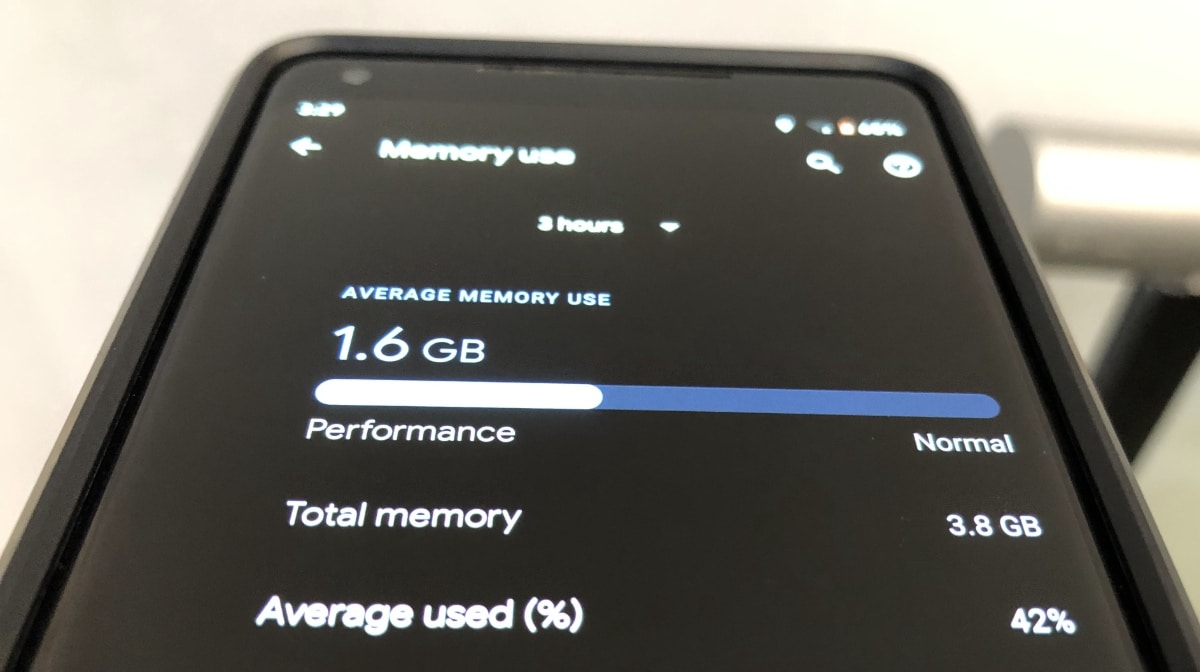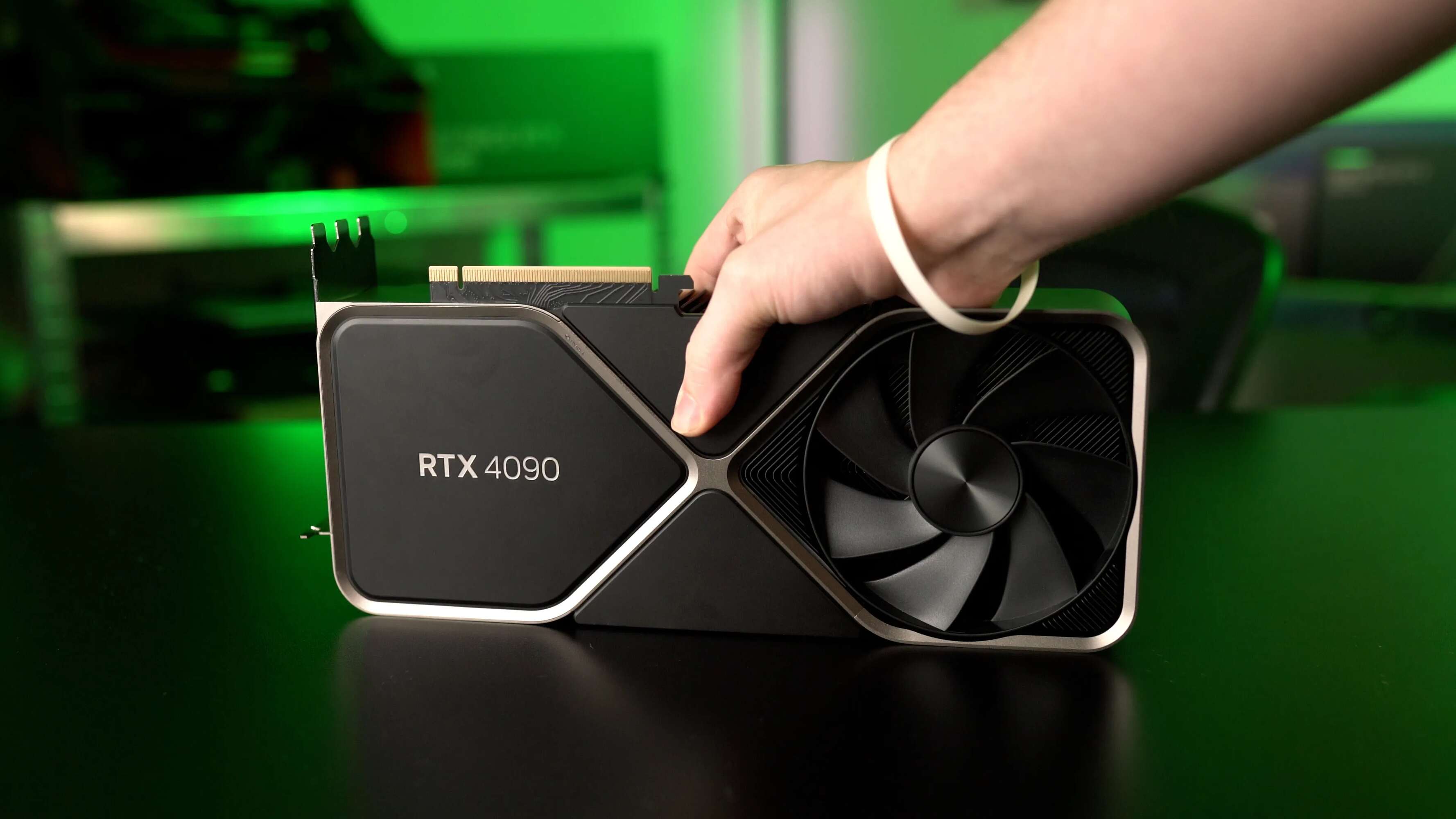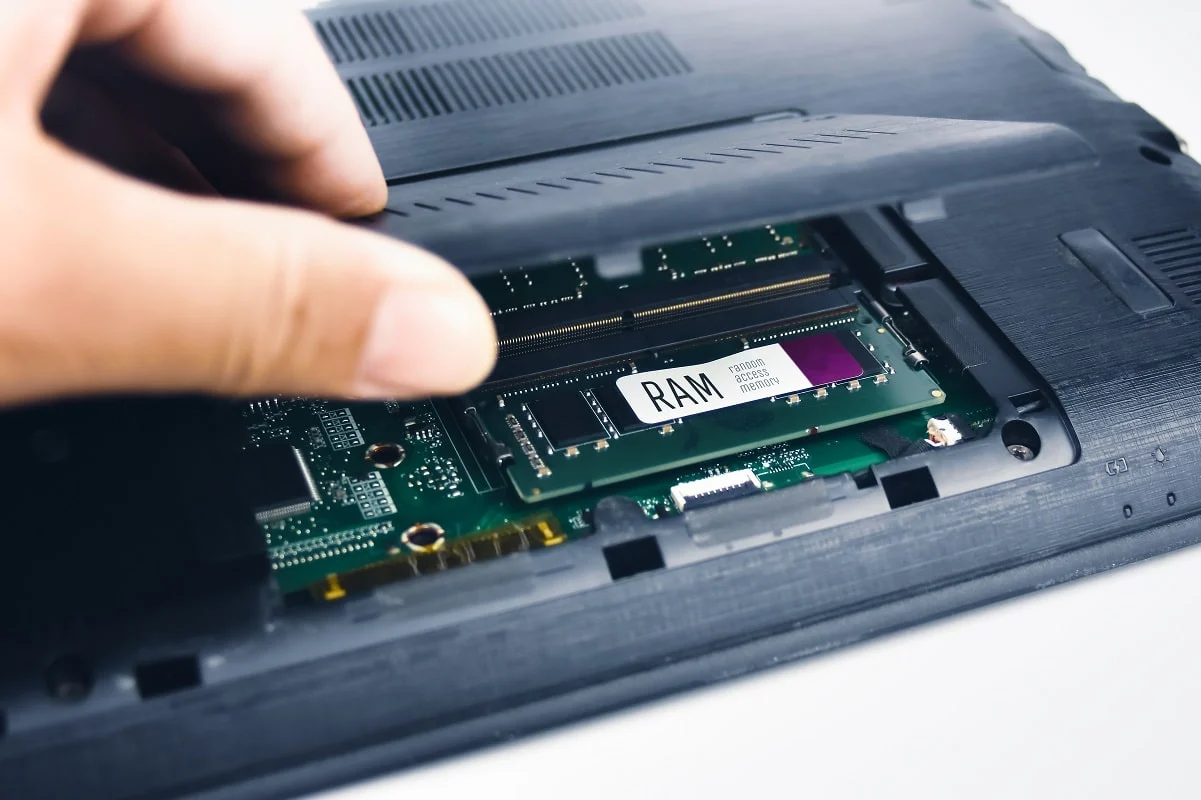Introduction
When it comes to optimizing the performance of your computer, one key factor to consider is the amount of RAM (Random Access Memory) you have. RAM plays a crucial role in determining how smoothly your system operates and handles various tasks. It is essentially the temporary storage space that your computer uses to store data that is actively being processed. Without sufficient RAM, your computer may become sluggish, leading to slower performance and frustrating user experience.
Whether you are a casual user who mainly uses your computer for browsing the internet, watching videos, and checking emails, or a professional who relies heavily on resource-intensive software and multitasking, the amount of RAM you have can impact your overall productivity and efficiency.
In this article, we will delve into the importance of RAM and help you determine how much RAM you should have for your specific computing needs. We will discuss the minimum RAM requirements for different tasks, recommended RAM for common activities, and factors to consider when deciding how much RAM to invest in. Whether you are a student, a professional, or a gamer, understanding the role of RAM will empower you to make informed decisions about upgrading your computer’s memory.
Why is RAM important?
RAM is an essential component of your computer’s hardware, and its importance cannot be overstated. It serves as a temporary storage space that allows your computer to quickly access the data it needs to perform various tasks. Here are a few key reasons why RAM is important:
- Speed and Performance: Having an adequate amount of RAM ensures that your computer can handle multiple tasks simultaneously without slowing down. It allows your operating system and applications to load and run smoothly, avoiding frustrating lags or freezes.
- Multi-tasking: If you frequently switch between different programs and applications, having ample RAM is crucial. It enables you to run several applications simultaneously without experiencing a significant drop in performance or a noticeable delay in response time.
- Resource-intensive tasks: RAM is especially vital for resource-intensive tasks such as video editing, graphic design, and gaming. These tasks require a considerable amount of memory to process large files, render complex visuals, and handle extensive calculations.
- Virtual Memory Management: When your computer runs out of available RAM, it relies on virtual memory, which uses a portion of your hard drive as temporary storage. However, accessing data from virtual memory is much slower than accessing data from RAM, leading to decreased performance. Sufficient RAM reduces reliance on virtual memory and improves overall system speed.
Overall, having enough RAM is essential for a smooth and efficient computing experience. It allows you to perform tasks quickly, run resource-intensive applications without issues, and seamlessly switch between different programs. Whether you are a casual user or a professional, ensuring that your computer has adequate RAM is vital for optimal performance and productivity.
How much RAM do you currently have?
To determine how much RAM is currently installed on your computer, you can follow these steps:
- On Windows: Click on the Start menu, search for “System Information” or “System Properties,” and open the corresponding application. Look for the “Installed Physical Memory” or “Total Physical Memory” field to see the amount of RAM installed on your system.
- On macOS: Click on the Apple menu, select “About This Mac,” and then click on the “Memory” tab. Here, you will find information about the installed RAM, including the type and size.
Once you have determined the amount of RAM you currently have, it’s essential to evaluate whether it meets your computing needs. Ask yourself the following questions:
- Do you frequently experience slow performance? If your computer is consistently sluggish, especially when running multiple programs, it could indicate that you have insufficient RAM.
- Do you use resource-intensive software? If you regularly work with software that requires a significant amount of memory, such as video editing applications or virtual machines, you may need to consider upgrading your RAM.
- Are you a gamer? Gamers often require higher amounts of RAM to handle the demands of modern games. If you experience lag or stuttering while gaming, it may be worth increasing your RAM capacity.
Understanding your current RAM situation is an essential first step in deciding whether an upgrade is necessary. In the next sections, we will explore the minimum RAM requirements for different tasks and provide recommendations for the amount of RAM you should consider based on your computing needs.
What are your computing needs?
Before determining how much RAM you should have, it’s crucial to consider your specific computing needs. Different tasks and activities require varying amounts of memory to run smoothly. Here are some common computing needs to consider:
- Casual usage: If you mainly use your computer for basic tasks like web browsing, email, and document editing, you can generally get by with a lower amount of RAM. A minimum of 4GB is typically sufficient for casual users.
- Office productivity: If you frequently use productivity software such as Microsoft Office or Google Workspace, along with web browsing and multitasking, it is advisable to have at least 8GB of RAM. This will ensure smooth operation and responsive performance.
- Graphic design and multimedia: If you work with graphic design software, edit photos or videos, or engage in multimedia production, you will benefit from a higher amount of RAM. A minimum of 16GB is recommended for seamless editing and rendering.
- Programming and development: Developers who work with resource-intensive development environments, virtual machines, or large-scale projects may require additional RAM. Depending on the specific requirements of your development work, 16GB or more may be necessary.
- Gaming: Gaming can be demanding on system resources, and having sufficient RAM is vital for a smooth gaming experience. The recommended amount of RAM for gaming purposes is 16GB or more, depending on the games you play and the resolution at which you play them.
It’s important to note that these recommendations serve as general guidelines. Your computing needs may vary based on the complexity and intensity of the tasks you perform. Additionally, keep in mind that technology is constantly evolving, and future software updates may require more RAM to run optimally.
By understanding your specific computing needs and the types of tasks you regularly perform, you can make a more informed decision about how much RAM you should have installed in your computer. In the next sections, we will explore the minimum RAM requirements for different tasks and provide further recommendations based on commonly performed activities.
Minimum RAM requirements for different tasks
The minimum amount of RAM required for different tasks can vary depending on the software and operating system you are using. Here are some general guidelines for the minimum RAM requirements for common tasks:
- Web browsing and basic tasks: For light web browsing, checking emails, and word processing, a minimum of 4GB of RAM should be sufficient. However, if you tend to have multiple tabs open or use memory-intensive web applications, considering 8GB or more would be beneficial.
- Office productivity: If you use software such as Microsoft Office or Google Workspace for word processing, spreadsheets, and presentations, a minimum of 8GB of RAM is recommended to ensure smooth performance, especially when multitasking.
- Graphic design and multimedia: Working with graphic design software, photo editing applications, or video editing software requires more memory. A minimum of 16GB of RAM is generally recommended to handle the large file sizes and complex processing involved in these tasks.
- Programming and development: Development environments, such as IDEs (Integrated Development Environments) and virtual machines, can be resource-intensive. Generally, a minimum of 8GB to 16GB of RAM is recommended for comfortable development work, but it may vary depending on the specific requirements of your projects.
- Gaming: Gaming can consume a significant amount of RAM, especially with modern, graphically intensive games. The minimum RAM requirement for gaming is typically 8GB, but for a better gaming experience and to accommodate future game releases, 16GB or more is recommended.
Keep in mind that these are minimum recommendations, and having more RAM than the minimum requirement can further improve performance and multitasking capabilities. If your budget allows, investing in higher RAM capacities can future-proof your system and ensure smooth operation even as software and applications become more demanding.
Now that you have an understanding of the minimum RAM requirements for different tasks, we will explore the recommended RAM for common activities in the next section.
Recommended RAM for common tasks
While the minimum RAM requirements for various tasks provide a baseline, it’s often beneficial to have more RAM to ensure optimal performance and multitasking capabilities. Here are some recommendations for the amount of RAM that is typically recommended for common tasks:
- Web browsing and basic tasks: For smooth web browsing, email, and basic productivity tasks, 8GB of RAM is generally recommended. This allows for seamless multitasking and the ability to have multiple browser tabs open without affecting performance.
- Office productivity: If you frequently work with office productivity software, such as Microsoft Office, Google Workspace, or similar applications, a minimum of 8GB to 16GB of RAM is recommended. This will ensure smooth operation even when working with large documents or spreadsheets.
- Graphic design and multimedia: For graphic design work, photo editing, or video editing, it is advisable to have at least 16GB of RAM. This capacity allows for efficient processing and rendering of large files and complex visual effects, resulting in a smoother workflow.
- Programming and development: Developers working with IDEs, virtual machines, and complex programming projects can benefit from having 16GB to 32GB of RAM. This allows for faster compilation and execution of code, smoother multitasking, and the ability to work with more demanding development environments.
- Gaming: Gaming enthusiasts should consider having a minimum of 16GB of RAM, especially when playing modern AAA games. With higher RAM capacities, such as 32GB, you can experience smoother gameplay, faster loading times, and better overall performance.
These recommendations provide a general guideline, and the specific amount of RAM you require may vary depending on your specific needs and usage patterns. Additionally, it’s important to consider the future as software and applications continue to evolve and require more resources. Investing in higher RAM capacities can provide better longevity and ensure that your system remains capable of handling future demands.
In the next section, we will discuss factors to consider when deciding how much RAM to have, helping you make an informed decision based on your individual requirements.
RAM requirements for gaming
Gaming is one of the most resource-intensive tasks you can perform on a computer, and having sufficient RAM is crucial to ensure a smooth and enjoyable gaming experience. The amount of RAM required for gaming depends on various factors, including the type of games you play, their system requirements, and your desired level of performance. Here are some guidelines for RAM requirements when it comes to gaming:
- Minimum RAM for gaming: The minimum amount of RAM recommended for gaming is generally 8GB. This should be sufficient to run most games released in the past few years. However, keep in mind that as games become more graphically advanced and demanding, the required RAM may increase.
- Recommended RAM for gaming: To ensure optimal performance, it is advisable to have at least 16GB of RAM when gaming. This allows for smoother gameplay, faster load times, and the ability to run other applications in the background without affecting game performance.
- High-end gaming: If you are an avid gamer who prefers playing graphically intensive games at higher resolutions, such as 1440p or 4K, and you want to future-proof your system, consider investing in 32GB or more of RAM. This will provide ample headroom for running demanding games and multitasking with other software simultaneously.
- Game streaming and content creation: If you plan to livestream your gaming sessions or create gaming content, such as recording gameplay or editing videos, having more RAM is beneficial. With RAM capacities of 32GB or higher, you can allocate resources to game streaming software, video editing applications, and other resource-intensive tasks while gaming without experiencing performance issues.
It’s worth noting that while RAM is an essential component for gaming, it is not the only factor that determines game performance. Graphics card, processor, and storage speed also play significant roles in delivering a smooth gaming experience. Therefore, it’s important to ensure that your entire system is well-balanced to achieve optimal gaming performance.
When choosing the amount of RAM for gaming, consider the types of games you play, their recommended system requirements, and your future gaming needs. Investing in higher RAM capacities will help future-proof your system, allowing it to handle upcoming, more demanding game titles. However, it’s crucial to strike a balance between your budget and the performance you desire.
In the next section, we will discuss additional factors to consider when deciding how much RAM to have, helping you make an informed decision based on your specific requirements.
Factors to consider when deciding how much RAM to have
When determining the amount of RAM to have in your computer, there are several important factors to consider. By taking these factors into account, you can make an informed decision that aligns with your specific requirements. Here are some key factors to consider:
- Computing tasks: Consider the types of tasks you regularly perform on your computer. If you mainly engage in basic web browsing, email, and word processing, a lower amount of RAM may suffice. However, if you frequently work with resource-intensive software or engage in activities like gaming or video editing, a higher amount of RAM will ensure smoother performance.
- Future-proofing: Technology is constantly evolving, and software requirements tend to increase over time. Consider investing in a higher amount of RAM than what is currently required to future-proof your system. This way, you can handle upcoming software updates and ensure your computer remains capable of handling more demanding tasks in the future.
- Budget: RAM prices can vary depending on the capacity and type. Consider your budget and prioritize your needs accordingly. While having more RAM is generally beneficial, make sure it aligns with your financial constraints.
- Operating system requirements: Check the recommended RAM specifications for the operating system you are using. Different operating systems have varying RAM requirements, and it’s important to ensure that you have enough RAM to support the operating system’s functionality and performance.
- Hardware limitations: Consider the limitations of your computer’s hardware, including the maximum amount of RAM it can support. Consult your computer’s manual or visit the manufacturer’s website to determine the maximum RAM capacity your system can handle.
- Multitasking: If you frequently multitask or run multiple applications simultaneously, having more RAM will allow for smoother multitasking and improved overall system performance. This is particularly important if you work with demanding software or engage in activities that require significant memory resources.
By considering these factors, you can make an informed decision about how much RAM to have in your computer. Remember that RAM is just one component of your overall system, and it should be balanced with other hardware components, such as the processor and graphics card, to ensure optimal performance.
In the next section, we will discuss how you can check your RAM usage to determine if you need to upgrade your existing memory.
How to check your RAM usage
Checking your RAM usage can provide valuable insights into whether your current amount of RAM is sufficient for your computing needs. Here are some methods to check your RAM usage:
- Task Manager (Windows): On Windows, you can use the built-in Task Manager to monitor your RAM usage. To access Task Manager, press Ctrl + Shift + Esc or right-click on the taskbar and select “Task Manager.” In the Task Manager window, go to the “Performance” tab and click on “Memory” to view the RAM usage in real-time.
- Activity Monitor (macOS): On macOS, you can use the Activity Monitor to check your RAM usage. To access Activity Monitor, open the “Applications” folder, go to the “Utilities” folder, and launch “Activity Monitor.” Click on the “Memory” tab to view the RAM usage statistics.
- Third-party software: There are various third-party software applications available that provide more detailed information on RAM usage. Examples include CPU-Z, HWMonitor, and Speccy. These tools offer comprehensive system information, including RAM usage, as well as other hardware-related details.
When checking your RAM usage, pay attention to the following details:
- Total RAM: Determine the total amount of RAM installed in your system and compare it to the usage. This will give you an idea of how much RAM is being utilized.
- Used and available RAM: Take note of the amount of RAM currently in use and the amount available. If the used RAM consistently reaches close to or exceeds the total RAM capacity, it may indicate that you need more RAM to handle your computing tasks.
- Memory-hungry processes: Look for any specific processes or applications that are consuming a significant amount of RAM. If you frequently use memory-intensive software or notice certain programs using a large portion of the available RAM, it may be an indication that your current RAM capacity is limiting their performance.
By regularly monitoring your RAM usage, you can evaluate if your current amount of RAM is sufficient for your needs or if an upgrade is necessary to improve your system’s performance.
In the next section, we will discuss how you can upgrade your RAM if you determine that you need more memory in your computer.
How to upgrade your RAM
If you have determined that you need more RAM to improve your computer’s performance, you may consider upgrading your RAM. Here’s a step-by-step guide on how to upgrade your RAM:
- Determine the type and capacity of RAM: Before purchasing new RAM modules, identify the type of RAM supported by your computer and the maximum capacity it can handle. Check your computer’s documentation or visit the manufacturer’s website for this information.
- Prepare for the upgrade: Shut down your computer and unplug it from the power source. Use an antistatic wristband or regularly ground yourself to prevent electrostatic discharge (ESD) that can damage the sensitive components of your computer.
- Locate the RAM slots: Open your computer’s case and locate the RAM slots on your motherboard. The number of RAM slots and their locations can vary depending on your computer’s make and model.
- Remove the current RAM modules (if applicable): If your computer is already equipped with RAM modules, carefully push down on the metal tabs on each side of the module to release it from the slot. Gently remove the module from the slot.
- Insert the new RAM modules: Take the new RAM modules and align them with the slot, making sure the notch on the module matches the slot. Firmly press down on the module until it clicks into place. Repeat this step for any additional RAM modules.
- Close your computer’s case: Once the new RAM modules are installed, close your computer’s case and secure any screws or latches to keep it in place.
- Power on your computer: Plug in your computer and power it on. The new RAM modules should be recognized by your system automatically.
- Check that the RAM upgrade was successful: To verify that the RAM upgrade was successful, you can check your computer’s system settings or use the methods mentioned earlier to view the amount of RAM installed.
It’s important to note that while upgrading your RAM can improve performance, it may not be the sole solution for every performance issue. Other factors, such as the processor, storage drive, or software optimization, can also impact overall system performance.
If you are unsure about performing the RAM upgrade yourself, it’s recommended to seek assistance from a professional or a trusted computer technician who can guide you through the process.
With the upgraded RAM installed, you should notice improved performance and the ability to handle more demanding tasks and applications with ease.
In the next section, we will provide a recap of the key points discussed and offer some final considerations on how RAM can enhance your computing experience.
Conclusion
RAM is a critical component in determining the performance and efficiency of your computer. Having an adequate amount of RAM ensures smooth multitasking, faster application loading times, and an overall seamless computing experience. By considering your computing needs, the minimum RAM requirements for different tasks, and the recommended RAM for common activities, you can make an informed decision about how much RAM to have in your system.
Factors such as future-proofing, budget, and the capabilities of your hardware should also be taken into account when deciding the amount of RAM to invest in. Regularly monitoring your RAM usage and checking for memory-hungry processes can help you identify if upgrading your RAM is necessary to improve system performance.
If you determine that an upgrade is needed, following the proper steps to upgrade your RAM can greatly enhance your computer’s performance. However, remember that RAM is just one piece of the puzzle, and other hardware components and software optimizations also play a role.
Upgrading your RAM can provide tangible benefits, especially for those who engage in resource-intensive tasks such as gaming, graphic design, programming, and multimedia production. With a sufficient amount of RAM, you can unlock your computer’s full potential and ensure a smooth and efficient computing experience.
Keep in mind that technology continues to advance, and memory requirements may change over time. It’s always a good idea to stay informed about the latest software updates and system requirements to ensure that your RAM capacity remains suitable for your computing needs.
By understanding the significance of RAM and making informed decisions when it comes to upgrading or purchasing a new computer, you can optimize your computing experience and achieve greater productivity and efficiency in your daily tasks.







